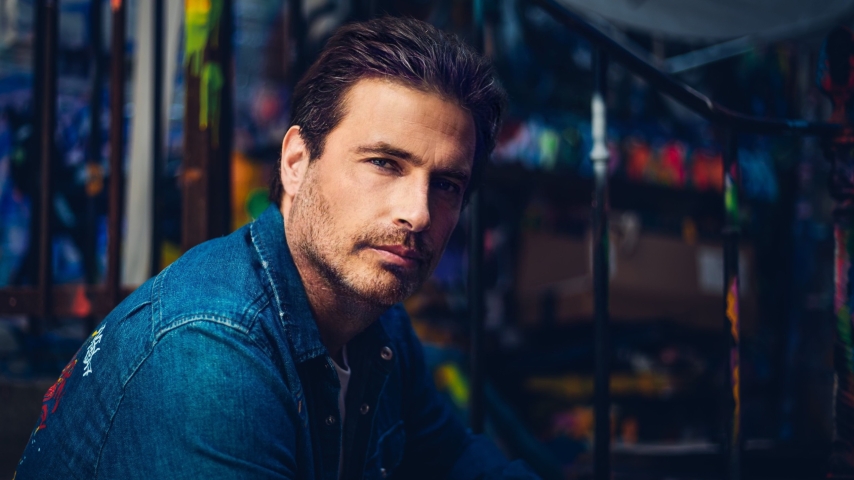
— Расскажите, как развивалась ваша художественная карьера?
Я начал свой путь в искусстве в 2004 году с первой скульптуры — ярко-красного крокодила из смолы. С детства меня вдохновляла поп-культура и повседневная жизнь. Поначалу всё было очень сложно: я вошёл в мир искусства довольно поздно, не был «кооптирован» и не шёл по традиционному пути. Это многим не нравилось, но мне удалось заявить о себе, и сегодня мои работы выставлены более чем в 200 галереях по всему миру.
Я создал собственные галереи Orlinski Galleries, посвящённые моему художественному миру. Это уникальная концепция, которая быстро развивается: недавно мы открыли новые пространства в Майами и Гштааде.
— Какое у вас образование и бэкграунд?
С раннего детства я увлекался искусством и музыкой. Уже в 4 года начал лепить фигурки из глины. Однако довольно рано понял, что в мире искусства сложно пробиться, поэтому выбрал более традиционную карьеру и работал в сфере недвижимости. Но в 38 лет у меня случилось профессиональное выгорание — я больше не получал удовольствия от работы и решил наконец посвятить себя своему настоящему увлечению — искусству.
— В какой момент вы почувствовали прорыв в своей карьере художника и с каким произведением или проектом это произошло?
У меня не было резкого «прорыва», но были важные этапы. Одним из ключевых стал Wild Kong — моя знаковая скульптура. Также большое значение имели коллаборации, например с Disney, — они поддержали моё стремление сделать искусство доступным для всех. Открытые выставки на улицах тоже важны для меня. Когда мне выпала честь стать первым французским художником, выставлявшимся на Елисейских Полях, я часто приходил и наблюдал, какие эмоции вызывает искусство у прохожих — это было по-настоящему уникально.
— Какие крупные выставки вы проводили?
Я участвовал во множестве выставок, но особенно ценю открытые экспозиции на улице, где искусство становится доступным для всех. Выставлялся по всему миру — на Венецианской биеннале, сейчас в Майами проходит выставка из более чем 12 монументальных скульптур. В родной Франции я активно сотрудничаю с муниципалитетами как крупных, так и небольших городов, стараясь донести искусство до максимально широкой аудитории. Самая впечатляющая выставка — конечно, на Елисейских Полях в Париже.
— Как вы выбираете будущие коллаборации?
Мне повезло — предложений много. Для меня важен человеческий фактор: я сотрудничаю с теми, с кем у нас схожие ценности и взаимное уважение. Коллаборация для меня — как брак: она должна быть полезной обеим сторонам. Она также должна быть логичной и иметь настоящую историю, а не строиться только ради коммерческой выгоды.
— Расскажите о сотрудничестве с Lancôme. Это ваша первая работа с брендом из сферы красоты?
Да, Lancôme стала моей первой коллаборацией в мире красоты. Как я уже говорил, я выбираю людей, а не бренды. Всё началось со знакомства с Франсуа Леманн, CEO Lancôme, — мы разделяем схожие ценности, любовь к инновациям и французскому «savoir-faire». Наши миры органично соединились, и из этого родилась по-настоящему исключительная коллаборация.
— Какую роль, по-вашему, искусство играет в обществе?
Искусство — это необходимость. Оно задаёт вопросы, заставляет задуматься, даёт возможность выразить себя. Современное общество нуждается в искусстве, чтобы мечтать, выражать эмоции, чувствовать свободу, создавать и открывать новое.
— Расскажите о вашем проекте с Optical Center. Как строился творческий процесс?
Процесс был схож с моими другими коллаборациями. Я всегда стараюсь объединить наши миры и создать нечто уникальное. Это был новый опыт, ведь ранее я не работал с оптикой. Но я горжусь результатом — мы объединили наш опыт, и отзывы клиентов получились очень положительные.
— Какой ваш проект мечты?
Моя мечта — вынести искусство в космос. Мы уже работаем над этим проектом. Представьте: арт-объект на Луне — это было бы что-то особенное. Искусство объединяет людей, и если оно способно объединить человечество за пределами Земли, это станет поистине мощным посланием.
— Сколько галерей вы открыли? Как выбираете города? Расскажите о галерее в Гштааде.
Мои работы представлены в более чем 200 галереях по всему миру, но я также открыл собственные Orlinski Galleries в Париже, Куршевеле, Сен-Тропе, Лондоне, Мехико, а недавно — в Майами, Эр-Рияде и Гштааде. Концепция будет расширяться и охватит все ключевые арт-столицы мира.
Галерея в Гштааде особенная — это вторая по счёту галерея на горнолыжном курорте после Куршевеля и первая в Швейцарии. Мы много работали над этим проектом вместе с моим партнёром, и я горжусь тем, что мои работы выставлены в таком престижном месте.
— Откуда вы родом, и как это влияет на ваше творчество?
Я настоящий парижанин — родился, вырос и всегда жил в Париже. У меня польские корни, отсюда и фамилия Орлински, но Париж — мой настоящий дом. Это самый красивый город мира, он вдохновляет меня на всех уровнях, особенно в плане архитектуры. Это единственное место, где я чувствую себя по-настоящему «своим».
— Как вы развиваете свои художественные навыки?
Главным образом — через путешествия и общение с новыми людьми. Я веду документальный цикл на TV5 Monde, где встречаюсь с уличными художниками по всему франкоязычному миру. В течение дня я живу их жизнью, погружаюсь в их мир. Сейчас идёт уже второй сезон, и я очень горжусь проектом: он помогает этим художникам развиваться, а мне — учиться и открывать новое.

